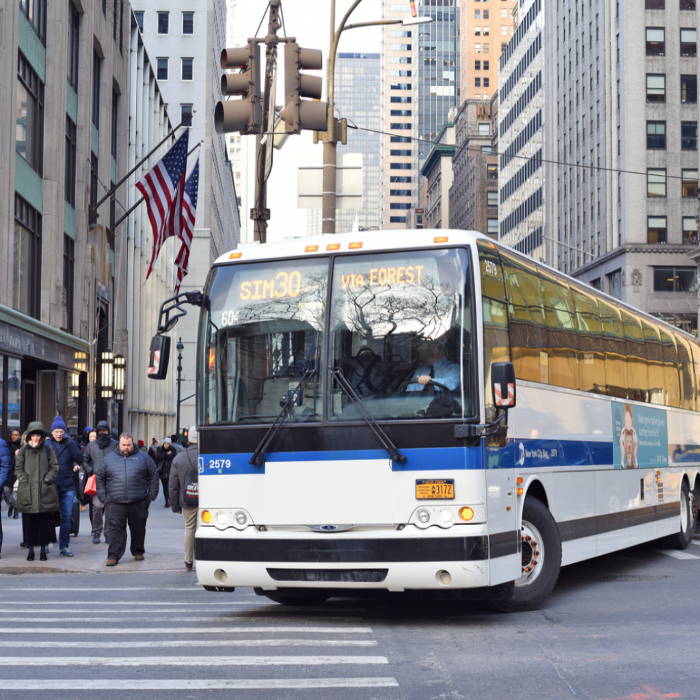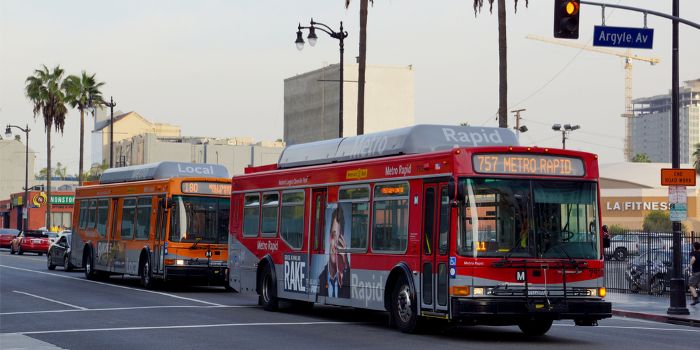Oregon-based provider of predictive real-time traffic signal information Connected Signals has developed a proprietary cloud-based vehicle-to-infrastructure (V2I) technology that offers priority to transit and emergency vehicles.
Connected Signals has launched its Signal Priority System (SPS) product suite that offers a centralized, cloud-based system connecting vehicles to traffic signals, and providing prioritization of buses, emergency medical services (EMS) vehicles, law enforcement, pedestrians, and others.
 The company’s new approach capitalizes on existing traffic management infrastructure and cellular data, rather than requiring dedicated roadside equipment. This makes deployment much easier and more cost-efficient for cities, provides flexibility to the existing traffic network, and supports expansion to future applications such as HOV (high-occupancy vehicles) preference and connected and autonomous vehicle (CAV) programs. SPS also provides dramatic time savings for cities and can be deployed city-wide or fleet-wide in a matter of weeks, as opposed to years with conventional methods.
The company’s new approach capitalizes on existing traffic management infrastructure and cellular data, rather than requiring dedicated roadside equipment. This makes deployment much easier and more cost-efficient for cities, provides flexibility to the existing traffic network, and supports expansion to future applications such as HOV (high-occupancy vehicles) preference and connected and autonomous vehicle (CAV) programs. SPS also provides dramatic time savings for cities and can be deployed city-wide or fleet-wide in a matter of weeks, as opposed to years with conventional methods.
SPS lets municipalities rapidly and affordably provide a wide range of signal priority applications, ranging from transit priority to EMS preemption. There is no need for infrastructure modifications that are prohibitively expensive to install and maintain, that take years to deploy, and that may be obsolete before deployment is complete.

Being cloud-based makes SPS future-proof: new features and improvements can be delivered by software update rather than through expensive hardware maintenance at each intersection. SPS can also work alongside existing or planned deployments to offer immediate service and coverage extensions as needed.
Connected Signals’ SPS is software-extensible, so private and public vehicles running the application, such as EMS vehicles and snowplows, can be given enhanced priority to help municipalities maximize throughput in ways that are currently impossible. SPS can also provide vehicle operators with speed recommendations and other information to directly manage traffic flow. Cities can also use the SPS technology for general traffic management applications or to target specific objectives that could include diminishing transit vehicle delays, optimizing traffic flow, and reducing carbon emissions. The technology can also be deployed to assist pedestrians and cyclists.

Connected Signals partners with transportation agencies to aggregate real-time traffic signal data using existing infrastructure, without the expensive equipment required by many other solutions. The SPS technology uses the company’s V2If (V2I for Free) device that connects traffic signal controllers with the outside world through an encrypted signal. The system can link to the cloud, Traffic Management Centers (TMCs) and cellular networks, or other devices with a secure connection.

“The need for smarter, safer, and more efficient traffic systems drive our efforts to create flexible and innovative V2I solutions like SPS,’ said Matt Ginsberg, CEO and co-founder of Connected Signals. “Our goal is to reduce 12.5% of the 1.7 trillion pounds of carbon attributable to urban transportation. Technology like our Signal Priority System can achieve this goal, can work everywhere and be customized for specific situations, and it can also ease the frustrations of all commuters dealing with traffic congestion, whether using mass transit or driving, walking or cycling.”






